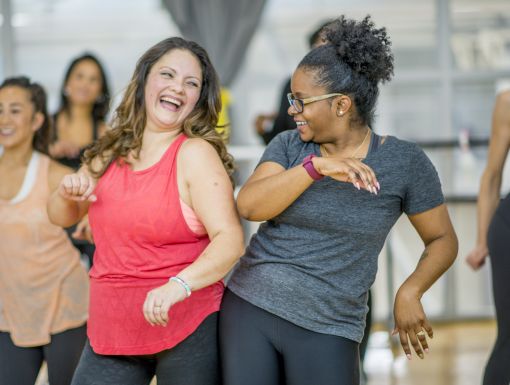
How to Prevent Injury While Getting Fit in 2026
Kickstarting your year with a renewed commitment to a healthier lifestyle is a worthwhile objective, which is why New Year’s resolutions often include fitness goals. However, if not done correctly, your new gym routine can also increase the likelihood of sports-related injuries.
We have all felt the fresh excitement and motivation that arrives with the start of a new fitness routine. Unfortunately, all too often that determination turns to disappointment when knee, back or joint pain sets in after only a few trips to the gym. Being mindful of your body’s specific needs and limitations will help you avoid injury and allow you to get a more complete workout to meet your new fitness goals.
There are certain steps that all people can take to reduce the risk of exercise-related injury regardless of fitness level. These measures include:
- Stretching before workouts
- Taking it slow
- Building up muscle strength in the core and throughout the body via cross-training
Below are my top suggestions for how to protect your knees, back and joints as you hit the gym in the new year. Adding these steps to your pre-and post-workout checklist will help you succeed in your resolutions in the long run and avoid a preliminary exercise injury.
Wear the right gear
One of the easiest ways you can actively prevent strain or injury is by ensuring your workout clothes and footwear fit properly. Avoid clothes that are overly tight that may restrict movement or baggy gear that might get caught on gym equipment.
Choosing the right footwear can also make or break your workout. Old or improperly fitting shoes can result in less support and improper body mechanics, which can affect the alignment of your feet, knees, hips and back. This has the potential to result in injury over time.
Start slow
While it can be tempting to jump right into your new workout routine, it’s best to start slowly and gradually increase exercise frequency and intensity.
When you begin to exercise new muscle groups, you may be prone to a degree of wear and tear on your joints and tendons until you build up strength and resistance. Set small goals for yourself at first and increase over time until you’re able to reach your overall fitness objectives.
Stretch
Stretching keeps your muscles long, lean and flexible. This flexibility helps prevent pulled muscles, undue strain and damage to the muscles and ligaments that protect your bones and joints.
Make sure you’re setting aside time to stretch before and after your new routine. When stretching, try to hold the pose for around 30 seconds. Don’t bounce or rock in the position, as this can contribute to injury. You should feel a little resistance, but you should never experience pain.
Need some help getting started? Try these stretches for better flexibility and reduced tightness.
Listen to your body
Sticking to your workout routine is crucial, but you have to listen to your body above all.
If you notice that an exercise or movement causes excessive discomfort, don’t try to push past the pain. You can almost always modify a workout to meet your specific needs without enduring pain.
Consult with a physical therapist or a sports physician if pain persists and is limiting your desired activities.
Strengthen your core
The core is made up of your chest, abs, hips and back, and is the epicenter of your body. A strong core can support your posture, movement and overall sense of balance. Core strength helps to stabilize you as you move through your workouts to reduce the risk of injury from a fall or improper alignment.
Cross-train
It can be easy to fall into a workout routine rut, but by rotating through different activities, you are less likely to cause injury through overuse. Try not to focus on the same type of exercise or area of your body every time you go to the gym.
Choosing different focus areas can also keep you engaged and prevent a loss of interest in your gym routine as you carry your new resolution into the year.
Look for low impact workouts
If you know you have existing joint issues, try some low impact workouts to avoid putting extra pressure on your knees, ankles, hips and lower back. Swimming, elliptical, cycling and light to moderate weight resistance training are all great options to get your heart rate up while keeping the impact on your joints low.
Prioritize rest
Don’t skip your rest days!
While exercising, your muscle fibers develop small tears. We see these tears most frequently with resistance training or lifting weights, and it’s perfectly normal. The breaking and rebuilding of these muscle tissues help you to build and develop muscle tone.
However, your body needs time to repair these tears between workouts. Planning rest days in your fitness routine and allowing for adequate sleep allows your muscles, nerves, bones and connective tissues the time they need to rebuild to carry you through your next workout.
Daily intense workouts can easily result in injury. While everyone should try to engage in some form of light exercise every day, it is important to listen to your body and limit strenuous or heavy exercise days to three to five per week depending on your tolerance.
Ask for help
If you feel like you are struggling with a certain workout or noticing pain in a specific area, speak to your doctor or work with a licensed athletic trainer or physical therapist to help you identify and to modify your movements, which may be causing you undue pain.
The bottom line? Always speak to your physician before beginning a new diet or exercise routine, especially if you have preexisting medical concerns. Then, have fun and get healthy in the new year!
Treat your back, shoulder, knee or elbow pain without an operation. Our physical medicine and rehabilitation team can help — learn more here..
Editor's note: This article was originally published on Jan. 17, 2020.


